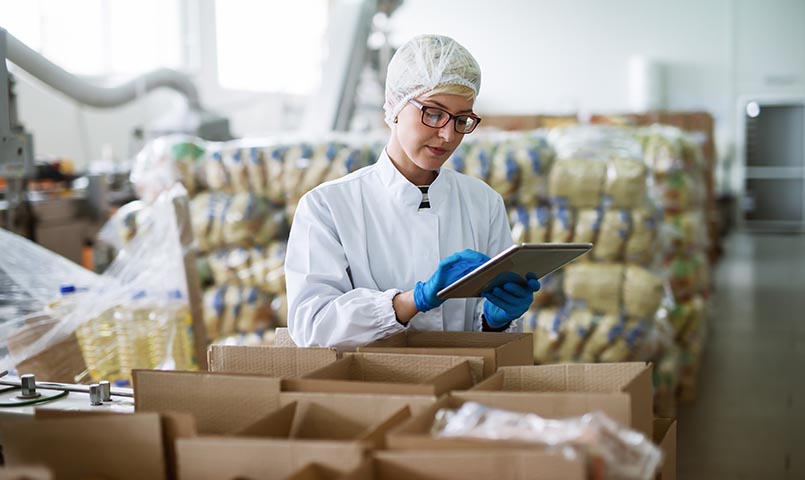Embarking on a Digital Journey: The Future of Agri-food Processing SMEs
If you’re in the agri-food processing industry, you might often find yourself swamped with paperwork, regulatory compliance, and production challenges. However, have you ever considered how technology can transform these tasks and propel your business into the future? Let’s take a journey from understanding what’s happening in your business today to predicting and shaping what could happen tomorrow, all through the power of digital technology.
Current Challenges in Agri-food Processing
First, let’s look at what’s happening in your business right now. You’re dealing with a mountain of data every day – from tracking inventory and managing suppliers to ensuring compliance with food safety regulations and conducting internal audits. Often, these tasks might be handled manually, leading to time-consuming processes and a high risk of human error. It’s not uncommon to lose track of crucial documents, face delays in reporting, or struggle with inconsistent data. This makes having a good overview very difficult and gives you the feeling that you are always playing catch-up.
Digital technology can provide a clear and comprehensive picture of your operations. By implementing digital tools, you can consolidate all your data in one place, streamline your production processes, and trace your raw inputs. This provides real-time visibility into every aspect of your business, making it easier to understand what’s happening at any given moment.
Understanding the Root Causes
Once you have a clear view of what’s happening, the next step is to understand why it’s happening. Manual processes and having multiple food management systems can lead to inefficiencies, errors, and non-compliance. For example, not upholding the HACCP plan locally could be a result from having many HACCP versions around and miscommunications, and using outdated suppliers could be due to a lack of overview in supplier certification control.
With the help of analytics tools, you can dig deeper into your data to identify the root causes of these issues. These tools can analyze patterns and trends in your operations, highlighting inefficiencies and pinpointing areas that needs your attention. By understanding the underlying reasons behind your challenges, you can address them more effectively and make informed decisions to optimize your processes.
The key is to become more insight-driven, but for that, you’ll need data and a system that can help you manage it successfully without getting you overwhelmed. Simply moving from paper to digital is not the answer; you will need software that helps you streamline and simplify complexity, allowing you to isolate problems faster and regain control.
Leveraging Predictive Analytics
Now, let’s look into the future. Predictive analytics can help you anticipate what will happen based on the data you have. Imagine being able to forecast demand for your products, foresee changes in regulatory requirements, or predict if your trusted suppliers will be able to deliver goods amidst current geopolitical changes.
By leveraging predictive analytics, you can proactively manage your operations and reduce risks. For instance, you can optimize inventory levels to meet future demand, schedule maintenance before equipment breaks down, and stay ahead of compliance changes. This forward-thinking approach can save you time, money, and stress, allowing you to focus on growing your business. Again, in this future approach, you will need data and a trusted software program that provides key insights.
Taking Action with Prescriptive Analytics
Finally, it’s time to take action. Prescriptive analytics goes a step further by not only predicting what will happen but also recommending the best course of action to achieve your desired outcomes. These tools can provide actionable insights and guidance, helping you make data-driven decisions to improve your operations.
For example, if predictive analytics indicates a potential drop in product demand, prescriptive analytics can suggest strategies to boost sales, such as alternative markets with easy entry to divert your products to. If equipment maintenance is needed, it can recommend the optimal time to schedule it to minimize disruptions. By following these recommendations, you can enhance efficiency, reduce costs, and stay competitive in the market.
The Road Ahead
Embarking on a digital journey might seem daunting, but the benefits are well worth it. Start by assessing your current processes and identifying areas where technology can make a difference. Invest in the right digital tools and training for your team to ensure a smooth transition. Collaborate with technology partners who understand your industry and can provide the support you need. It is also a key that they have strong plans to grow new functionalities and into the new predictive and prescriptive areas, so you are buying into a technology that prepare you for the future.
By embracing digital technology now, you can transform your agri-food processing business, making it more efficient, resilient, and ready for the future. From understanding what’s happening today to predicting and shaping what’s to come, the digital journey offers endless possibilities. So, take the leap and see how technology can help you in your daily work and drive your business forward.
We believe the future of food processing is digital. So, don’t settle for a digital food safety and quality management system that will only make you good; find one that will make you a superstar.









